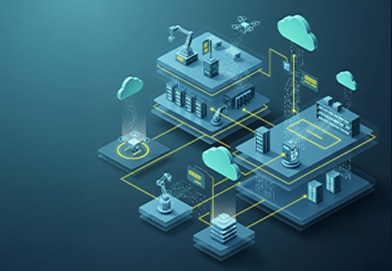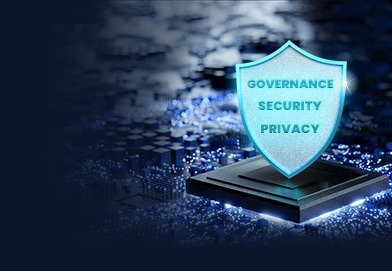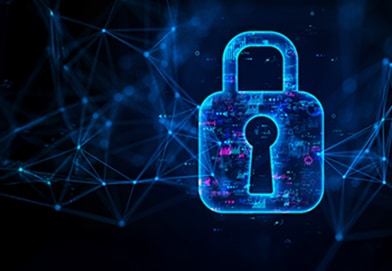Snowflake has officially deprecated password-only access, requiring organizations to move to stronger authentication methods. This change impacts every user, from technical teams to executives, because Snowflake is where businesses store their most critical data, ranging from financial records, customer info, and proprietary insights.
Understanding this shift is important for technical leaders as well, as it helps safeguard data, maintain compliance, and avoid costly data breaches, which often come with their own set of issues.
Why Snowflake Security Matters (Especially for Non-Technical Teams)
Snowflake security matters because Snowflake is more than just a data storage platform. It’s where your company’s most sensitive information lives. Financial records, customer profiles, healthcare data, and other mission-critical assets are often stored in Snowflake environments. This makes the platform a target for both external threats and internal mishandling.
While it’s easy to assume that security is solely the responsibility of the IT team, non-technical users also play a vital role in safeguarding your company’s data. In fact, many of the day-to-day interactions with Snowflake, such as running reports, exporting data, or accessing dashboards, happen outside of the technical team’s oversight.
This means that every user becomes a potential gatekeeper or risk vector. And when users don’t adhere to Snowflake best practices, the consequences are very real. Data leaks can lead to massive fines under regulations like GDPR and HIPAA.
Unauthorized access can result in breaches that damage brand trust and even trigger legal scrutiny. Even small missteps, like an employee sharing credentials or downloading data over public Wi-Fi, can spiral into serious issues.

So, it’s easy to see that security isn’t just a technical concern, but a business risk. And in today’s data-driven world, every department, ranging from marketing to finance to HR, has a stake in protecting what’s inside Snowflake.
Understanding your role, even if you’ve never written a single line of SQL, is the first step toward a secure data culture.
What’s New in Snowflake’s Security Rules?
Snowflake is currently updating its security rules to phase out Password-Only (PW-Only) access, introducing stronger authentication methods to protect sensitive data and meet compliance expectations. Here’s what you need to know:
- PW-Only Deprecation—Snowflake is deprecating PW-Only access and rolling out changes to require multi-factor authentication (MFA) for all human users when using passwords. The platform will completely block PW-Only access by November 2025, and it’s worth noting that this change affects both interactive users and service accounts.
- No Legacy Service—Service accounts will also lose password access entirely. Traditional “service users” that previously relied on passwords will have to switch to alternatives such as SSO, key-pair authentication, or programmatic tokens. The transitional “LEGACY_SERVICE” user type will no longer be supported by the platform. So, if an analytics pipeline still uses a stored username and password to pull nightly reports, it will fail the moment PW-Only access is disabled.
- Zero Trust—Snowflake’s move to deprecate PW-only access reflects broader trends in cybersecurity, emphasizing identity verifications and least-privilege access to limit risks. In other words, Zero Trust means that no user, device, or application should be automatically trusted, even if they’re inside your company’s network.
These updates impact both human users and service accounts, and any user who still logs in with just a username and password will need to adjust how they sign in. Likewise, any automated tasks, scripts, or tools that rely on service accounts using passwords will need to be reconfigured with more secure alternatives.

Non-technical teams should care about this because the effects go beyond IT. If your marketing, finance, or HR teams still rely on outdated login methods, they may lose access at a critical time. Most importantly, all of these changes require interdepartmental collaboration.
In other words, non-technical teams must collaborate with admins to ensure that their access remains secure, compliant, and uninterrupted.
Core Snowflake Security Best Practices
To keep up with Snowflake’s security updates, organizations need to adopt a few core practices that apply to everyone, and not just technical teams. These best practices are simple to understand, yet highly effective and critical for reducing risk without slowing down your business operations. You’ll find a more comprehensive breakdown below:
| Best Practice | What Is It | Why It Matters |
| Role-Based Access Control (RBAC) | Assign user-specific roles that define Snowflake access | Prevents over-provisioning and accidental exposure of sensitive data |
| Enforce MFA | Adds a second verification step via app code, text, or hardware tokens | Reduces the risk of unauthorized access even if passwords are compromised |
| Follow the Principle of Least Access | Grants users only the access they need to perform their role | Minimizes the risk of accidental or malicious data misuse. |
| Secure Data Sharing Settings | Controls who can see and use shared data in Snowflake | Protects against accidental exposure of sensitive information |
| Monitor and Audit Access Logs | Tracks user logins, data access, and unusual activity patterns | Detects suspicious behavior early and supports regulatory compliance |
User Role-Based Access Control (RBAC)
RBAC means assigning user-specific roles that define what said users can see and do within the platform. Instead of giving anyone broad access, you grant permissions based on their job responsibilities. This makes risk management a breeze and also avoids accidental exposure of sensitive data.
For example, a marketing analyst might only need access to anonymized customer data. At the same time, someone in finance may require visibility into billing and revenue tables. By clearly separating these roles, you prevent over-provisioning, which is a common issue that could potentially lead to costly mistakes.
RBAC simply makes Snowflake user management more structured and audit-ready, which supports broader goals in data governance and Snowflake security compliance.
Enforce Multi-Factor Authentication (MFA)
MFA adds a second layer of protection to your Snowflake login process, so instead of just entering a password, users must also verify their identity through a secondary method. These often include verification via mobile apps, text codes, or hardware tokens. This extra step significantly reduces the risk of unauthorized access, even if a password is compromised.

MFA is now required under Snowflake’s updated security rules, and for good reason. Most data breaches start with a stolen or weak password, and enforcing MFA helps protect every user account. This is especially important for non-technical users who may not always follow complex security practices.
Follow the Principle of Least Privilege
The principle of least privilege means giving users only the access they need—nothing more. This significantly reduces the chances of someone accidentally viewing, changing, or exporting sensitive data they shouldn’t have access to in the first place.
For non-technical teams, this also means limited access to specific dashboards or reports, but not the underlying raw data or administrative functions. Adhering to this principle also makes Snowflake user management more predictable and secure, helping your organization adhere to data governance policies. It’s a smart way to limit risk while keeping workflows smooth and efficient.
Secure Data Sharing Settings
One of Snowflake’s strong points is that it makes sharing data across teams, departments, and even external partners quite easy. However, that convenience often comes at a trade-off in terms of increased responsibility. If data sharing settings aren’t properly configured, you risk exposing sensitive information to the wrong people.
Non-technical users often interact with shared dashboards and reports, often without ever realizing that the underlying data may be broader than necessary. That’s why it’s important to work with admins to ensure shares are limited to what’s actually needed.
So, regardless of whether you’re sharing with internal stakeholders or third parties, it’s really important to secure settings. Properly managed data sharing protects privacy, maintains compliance, and ensures that your organization only exposes what it intends to.
Monitor and Audit Access Logs
Access logs are your organization’s security trail inside Snowflake. They show who accessed what data, when, and from where. Regularly reviewing these logs helps identify suspicious behavior, like a user accessing data they don’t normally use, or someone logging in from an unfamiliar location or an unauthorized device.
For non-technical teams, this doesn’t mean digging through raw logs. Both Snowflake and third-party tools offer dashboards that visualize this activity in simple terms, making it easier to spot anomalies. Also, monitoring access isn’t just an IT department’s task, but an interdepartmental effort.
Interdepartmental collaboration between data or security teams and others can help your organization set up alarms or regular reports that highlight access anomalies, failed login attempts, or off-hours activity. By keeping an eye on irregular patterns, you can spot issues more easily.
It’s a proactive step that turns visibility into accountability, which is key in any Snowflake security best practices strategy.
How Non-Technical Teams Can Take Action
Data security is everyone’s business, and while many believe it starts and ends with the IT department, the truth is that it actually starts with everyday users making smart, informed choices. Even without technical expertise, your team can play a vital role in protecting company data and ensuring your Snowflake environment remains both secure and compliant.

Here’s a checklist any non-technical user can follow:
- Confirm your access level—You don’t need to know the difference between a reader role and a data engineer, so just ask your admin if your current access matches your job duties. If you have more than you need, you might think that it can’t hurt, but reducing access is a good thing in this case.
- Enable MFA—If it’s not already required, set MFA up. It only takes a few seconds to configure, and it dramatically improves account security.
- Attend internal security trainings—Make time for company-led training sessions that explain Snowflake security updates or policy changes. These aren’t just for IT; they’re for everyone, as they help everyone understand what’s at stake.
- Use approved devices and secure networks—Avoid logging into Snowflake over public Wi-Fi or personal laptops without approval. Stick to the tools your company has vetted for safety.
- Work with your tech teams—If something, like an unusual data share or a login issue, doesn’t feel right, you need to flag it and report. Your admin team would rather hear about a false alarm than miss a real one.
By taking these simple steps, non-technical users become active participants in data governance and Snowflake user management. You don’t need to know how to write code to protect your company’s most valuable asset, its data.
Speak to our Data Expert about applying Snowflake security best practices and data management if you have any questions or need any assistance.
How to Stay Compliant with Snowflake’s Security Policies
Security and compliance go hand in hand, especially when your Snowflake environment stores sensitive data subject to regulations like HIPAA, SOC2, or GDPR. Snowflake itself offers SOC 2, ISO, and HIPAA-ready capabilities, but these certifications don’t make your organization automatically compliant. So, you still need the right internal processes to meet your specific obligations.
These frameworks are more than mere checklists for IT departments. They’re legal and ethical commitments your entire organization makes to protect customer information and business integrity.
By following the core Snowflake security practices, like enabling MFA, applying role-based access control, and monitoring access logs, your company is already aligning with many of the requirements these frameworks demand.
These steps show your organization takes data protection seriously. That builds trust with partners, customers, and regulators.
To stay compliant over time, it’s important to:
- Document your policies and controls—Know your access, who has it, and how that access is reviewed and revoked.
- Review roles and permissions regularly—Conduct quarterly or biannual audits with both technical and non-technical stakeholders.
- Stay current with Snowflake security updates—As the platform evolves, so do its compliance capabilities and requirements.
Compliance isn’t about chasing certifications. It’s about creating a culture where data protection is everyone’s responsibility. Snowflake just provides the tools. Your team makes the compliance happen.
Frequently Asked Questions
Here are some of the most frequently asked questions about best practices associated with Snowflake security:
Do I need to know SQL to follow Snowflake security best practices?
No, you don’t need to know SQL to contribute to Snowflake’s security. While technical users manage configurations and roles behind the scenes, non-technical users play a crucial role simply by following access protocols, enabling MFA, and staying aware of how they interact with data.
Asking the right questions, attending internal security trainings, and knowing what data you have access to are just as important.
How often should we review user access in Snowflake?
Access reviews should happen at least every quarter, and even frequently for organizations with sensitive data or strict compliance requirements. This ensures that employees only have access to the data they need, especially if they’ve changed roles or no longer use Snowflake regularly.
Non-technical team leaders can support this process by confirming whether their team’s current permissions still make sense.
Who is responsible for enforcing Snowflake’s security rules in a company?
While IT and data teams are typically responsible for configuring Snowflake security settings, everyone in the organization shares responsibility for enforcing them. Non-technical managers should ensure their teams follow policy, use secure login methods, and report anything unusual.
Security works best when it’s embedded into company culture, and not just delegated to one department.
Final Thoughts
Snowflake’s evolving security rules are a reminder that protecting an organization’s data is no longer just a job for the IT department, but a company-wide priority. For non-technical teams, the key takeaway is this: you don’t need to be a security expert to make a meaningful impact.
By understanding your access, using secure login practices, and collaborating with your tech team, you can help create a safer data environment, which supports compliance, trust, and long-term growth.
If you’re looking to implement the new Snowflake security best practices, don’t hesitate to contact us and speak with our data experts.



